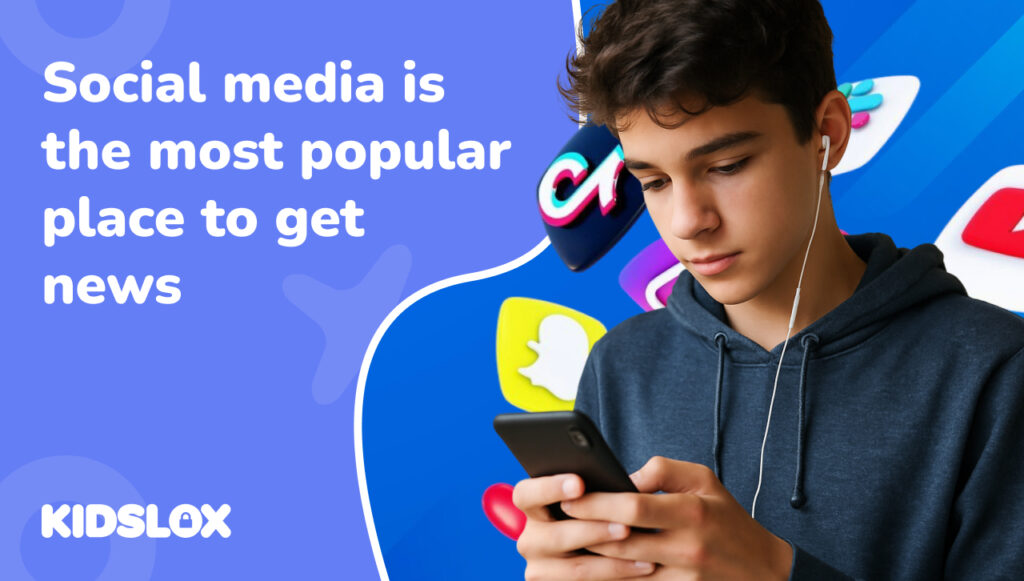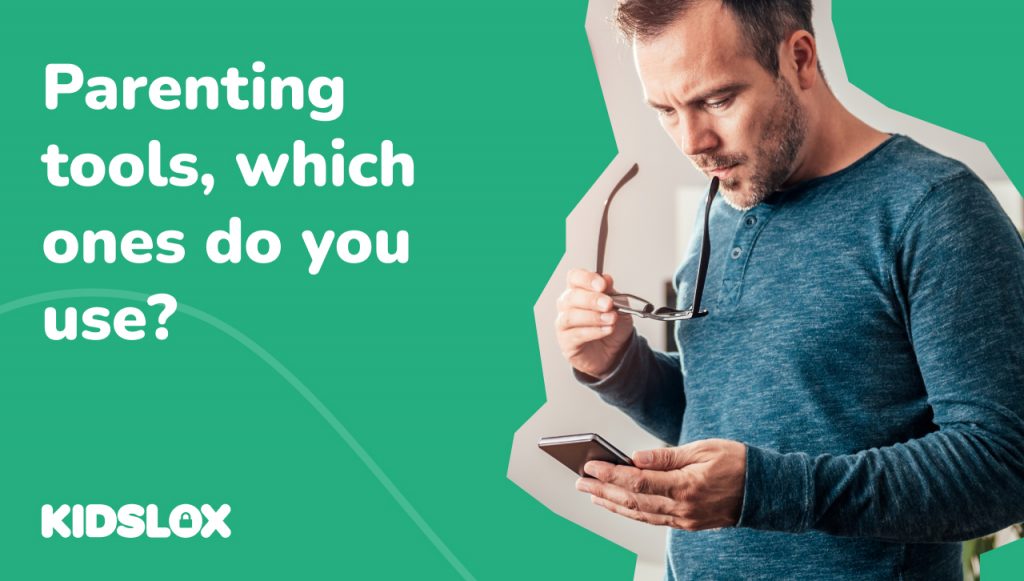What are the latest text slangs and secret texting codes kids are using?
Skibidi. Rizz. Mewing. Ever feel like your kids are speaking a different language? They are!
The growth of social media and our global interconnectedness means that another type of language is being learnt by teens around the world; slang. For young people, slang is nothing new, but its rapid and international proliferation is unique in our digitalized world.
As parents, understanding this ever-changing slang is crucial not only for staying connected with your kids, but also for ensuring their safety online.
This new lexicon can be both fascinating and bewildering. Recent trends, such as the viral use of terms like “skibidi,” and the growing number of parents sharing their experiences on platforms like TikTok, highlight the importance of staying informed about teenage slang.
This new, ever-changing language has emerged, characterized by abbreviations, acronyms, and slang that can be perplexing to those not in the know. For parents, keeping up with their kids’ latest turn of phrase is not just about being “cool” or relatable; it’s a vital part of safeguarding their children’s well-being in an increasingly digital world.
Understanding teenage slang can provide parents with insights into their children’s social interactions and emotional states. It can also help in identifying potential red flags, such as cyberbullying, exposure to inappropriate content, or even involvement in dangerous activities. Moreover, being familiar with the language your children use can foster more open and effective communication, helping to bridge the generational gap and build a stronger, more trusting relationship.
Understanding Teenage Text Slang
Teenage slang refers to the informal, often playful, language that teenagers use to communicate with each other. This slang is characterized by its rapid evolution, driven by social media, popular culture, and peer influence. New words and phrases emerge regularly, often originating from viral videos, memes, and online communities. Unlike traditional language, which evolves slowly over time, teenage slang can change almost overnight, reflecting the dynamic nature of the digital world.
One of the key drivers of this rapid evolution is the influence of social media platforms like TikTok, Instagram, and Snapchat. These platforms are breeding grounds for new slang terms, with trends and challenges often giving rise to new words and phrases that quickly gain popularity among teens.
For instance, if a parent comes across a message where their child is being “ghosted” or “thrown shade,” understanding these terms can help them provide appropriate support and guidance. Additionally, being familiar with slang can help parents identify when their child might be engaging in risky behavior or being exposed to harmful content. Recognizing terms like “9” (parent watching) or what “OMK” means in text (on my knees), it can alert parents to potentially secretive or dangerous conversations.
Moreover, understanding teenage slang can help parents build stronger relationships with their children. When parents make an effort to understand and use their children’s language, it shows that they care about their interests and are willing to engage with them on their terms. This can lead to more open and honest communication, allowing parents to provide better support and guidance as their children navigate the challenges of adolescence.
Need an internet slang dictionary?
Read on for examples of some of the most popular slang words used by teenagers today, the slang abbreviations they’re using and other text slang codes you need to know. Let’s start with some of the words and phrases creeping their way into our modern lexicon…
- Lit: Exciting or excellent. Used to describe something that is particularly fun or impressive. For example, “The party last night was lit!”
- Salty: Feeling upset or bitter. Often used to describe someone who is acting resentful or annoyed. For example, “She’s salty because she didn’t get invited.”
- GOAT: Greatest Of All Time. Used to praise someone who is considered the best in their field. For example, “LeBron James is the GOAT of basketball.”
- Flex: To show off. Can be used both positively and negatively. For example, “He’s always flexing his new shoes.”
- Savage: Someone who is brutally honest or aggressive in a cool way. For example, “She made a savage comeback during the debate.”
- Ghosting: Suddenly cutting off all communication without explanation. For example, “I thought we were friends, but she’s ghosting me.”
These terms are just the tip of the iceberg. Teenage slang is incredibly diverse and can vary widely depending on geographic location, social group, and even the specific online communities that teenagers are part of. Keeping an ear to the ground and staying informed about new slang as it emerges can help parents stay connected with their children’s evolving language.
More Teenage Slang Phrases to know…
Alongside individual words, teenagers often use specific phrases that convey unique meanings:
- Throw shade: To subtly disrespect or criticize someone. For example, “She’s always throwing shade at her ex on social media.”
- No cap: No lie or for real. Used to emphasize the truth of a statement. For example, “I’m telling you, that movie was amazing, no cap.”
- Low-key: Secretly or quietly. Used to describe something done with subtlety or without drawing attention. For example, “I’m low-key excited for the concert.”
- High-key: Openly or loudly. The opposite of low-key, used to describe something done openly or with enthusiasm. For example, “I’m high-key obsessed with this new show.”
The Top 100 text slang abbreviations to know today
Text slang, or text speak, includes abbreviations and acronyms that make typing faster and more efficient. However, it’s also a handy way for teens to code some of the things they’re saying, making it harder for parents to understand the lingo. Here are some common ones:
- AFK: Away From Keyboard
- GTG: Got To Go
- IDC: I Don’t Care
- ILY: I Love You
- JK: Just Kidding
- TBH: To Be Honest
- YOLO: You Only Live Once
- ASAP: As Soon As Possible
- BRB: Be Right Back
- DIY: Do It Yourself
- FOMO: Fear Of Missing Out
- IMHO: In My Humble Opinion
- IRL: In Real Life
- LMK: Let Me Know
- NBD: No Big Deal
- OMG: Oh My God
- POS: Parent
- more
- ChatGPT
- POS: Parent Over Shoulder
- ROFL: Rolling On the Floor Laughing
- SMH: Shake My Head
- TBT: Throwback Thursday
- TTYL: Talk To You Later
- WYD: What You Doing?
- YOLO: You Only Live Once
- AFAIK: As Far As I Know
- BAE: Before Anyone Else
- BC: Because
- CYA: See You
- DM: Direct Message
- FBO: Facebook Official
- GR8: Great
- HMU: Hit Me Up
- IDC: I Don’t Care
- IKR: I Know, Right?
- JK: Just Kidding
- LMAO: Laughing My Ass Off
- NVM: Nevermind
- OMW: On My Way
- POTD: Photo of the Day
- RN: Right Now
- SFW: Safe For Work
- TMI: Too Much Information
- TL;DR: Too Long; Didn’t Read
- TMI: Too Much Information
- TY: Thank You
- UWU: An emoticon representing a cute face
- VC: Voice Chat
- WTH: What The Heck?
- AF: As F***
- BBL: Be Back Later
- BRB: Be Right Back
- BTS: Behind The Scenes
- CU: See You
- EZ: Easy
- FTW: For The Win
- IDC: I Don’t Care
- ICYMI: In Case You Missed It
- IDGAF: I Don’t Give A F***
- IK: I Know
- ILYSM: I Love You So Much
- J/K: Just Kidding
- LB: Like Back
- LDR: Long Distance Relationship
- LFMF: Learn From My Fail
- LMK: Let Me Know
- LOL: Laugh Out Loud
- NP: No Problem
- NSFW: Not Safe For Work
- OMFG: Oh My F***ing God
- OT: Off Topic
- PPL: People
- QOTD: Quote of the Day
- RN: Right Now
- RT: Retweet
- SMH: Shake My Head
- SRSLY: Seriously
- SUS: Suspicious or Suspect
- TBH: To Be Honest
- TGIF: Thank God It’s Friday
- TMI: Too Much Information
- TTYL: Talk To You Later
- WB: Welcome Back
- WBU: What About You?
- YOLO: You Only Live Once
- ZZZ: Sleeping or Bored
- L8R: Later
- B4: Before
- CWYL: Chat With You Later
- GRWM: Get Ready With Me
- ILY: I Love You
- KMS: Kill Myself
- NGL: Not Gonna Lie
- ROFLMAO: Rolling On The Floor Laughing My Ass Off
- SYS: See You Soon
- THX: Thanks
- VSCO: A photo editing app often used by teens
- WTF: What The F***
- XOXO: Hugs and Kisses
These abbreviations are widely used across various platforms, including texting, social media, and online gaming. Familiarizing yourself with these terms can help you better understand your child’s digital conversations and spot any potential red flags.
What about secret texting codes?
Teenagers often use secret codes to communicate without adults understanding. Here are a few examples:
- 9: Parent watching. This code alerts the recipient to be cautious because a parent is nearby.
- OMK: On My Knees. This could imply pleading or a sense of urgency.
- PIR: Parent In Room. Similar to 9, it warns that a parent is present.
- KPC: Keeping Parents Clueless. Used to indicate that parents are not aware of the ongoing conversation.
- CD9: Code 9, meaning parents are around.
…The use of ellipses (three dots) in texting can convey various meanings depending on the context. It can indicate that a message is unfinished, create suspense, or imply something left unsaid. For instance:
- Suspense or anticipation: “I have something to tell you…”
- Unfinished thought: “I don’t know if I should go…”
- Passive-aggressive tone: “Sure…whatever you say.”
- Understanding the use of ellipses can help parents interpret the tone and intent behind their child’s messages. It can provide clues about their emotional state or the nature of their conversations.
How can I stay on top of my kids’ ever changing text slang?
To stay updated with the latest slang, parents can use resources like Urban Dictionary. This crowd-sourced online dictionary provides definitions and examples of contemporary slang, allowing parents to keep up with new terms as they emerge. Urban Dictionary is particularly useful because it often includes multiple definitions and examples, providing context and helping parents understand how a term is used in different situations.
Recent trends in teenage slang often emerge from viral challenges, memes, and social media platforms like TikTok. For example, the term ‘skibbidy’ gained popularity through a viral TikTok trend, showcasing how quickly new slang can spread. News reports and online discussions about these trends can provide valuable insights for parents.
For instance, a recent news report highlighted how teens are using TikTok to create and share new slang terms, which can quickly become part of their everyday language. Parents can stay informed by:
- Following relevant news: Keeping an eye on news reports and articles about teenage slang and online trends.
- Engaging with social media: Using platforms like TikTok, Instagram, and Twitter to observe trending terms and challenges.
- Staying informed about these trends helps parents understand the context in which new slang emerges and how it fits into their children’s social interactions.
Many parents are turning to TikTok to share their experiences with teenage slang, offering examples and explanations. These TikToks can be educational and entertaining, providing real-world context and helping other parents learn. For example:
Understanding teenage slang is more than just a way to stay relevant; it’s a crucial aspect of keeping your children safe online. By familiarizing yourself with common slang words and phrases, text slang, and secret texting codes, you can better monitor your child’s digital interactions and identify potential risks. Utilizing resources like the Urban Dictionary, text slang translators, and following recent trends and news reports can help you stay informed and connected.





